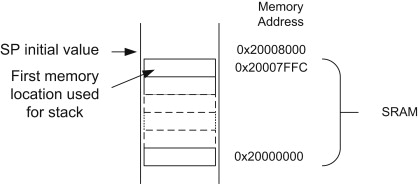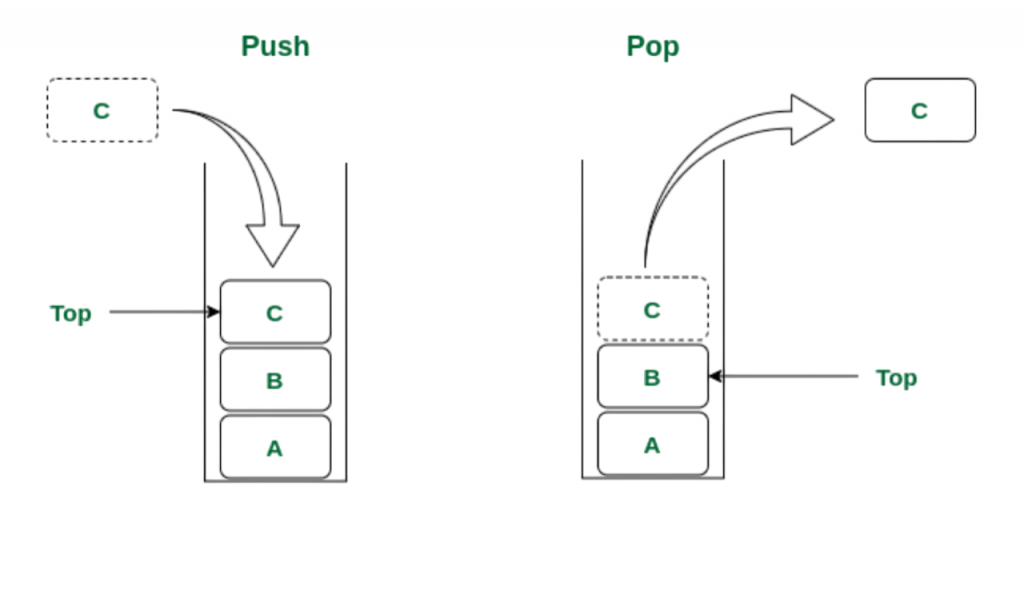
- Introduction to Memory Management
- What is Stack Memory?
- What is Heap Memory?
- Key Differences Between Stack and Heap
- How Stack Memory Works (LIFO Structure)
- How Heap Memory Works (Dynamic Allocation)
- Allocation and Deallocation Mechanisms
- Conclusion
Introduction to Memory Management
Memory management is a core concept in computer science and programming, determining how a program uses and organizes memory during execution. In most modern programming languages, memory is divided into various regions, primarily stack and heap, each serving distinct purposes. Understanding the differences between these memory areas helps developers write efficient, secure, and optimized programs. Whether you’re using C/C++, Java, or Python, proper memory handling is crucial for system performance and avoiding runtime issues like segmentation faults or memory leaks.Memory management is a fundamental concept in computer science and programming that involves efficiently handling Web Designing & Development Training a computer’s memory resources. It ensures that programs have enough memory to execute properly, while also maximizing the use of available memory and preventing issues such as memory leaks, fragmentation, or system crashes. In modern computing systems, memory is a limited resource, and multiple applications often run simultaneously. Memory management helps allocate portions of memory to different processes as needed and reclaims it when no longer in use. This process can be handled manually by the programmer, as seen in languages like C and C++, or automatically through garbage collection in languages like Java and Python. There are two main types of memory: primary memory (RAM), which is fast and volatile, and secondary memory (like hard drives), which is slower but persistent. Memory management focuses mainly on RAM, determining how data is stored, accessed, and freed during program execution. Efficient memory management is crucial for performance, especially in systems with limited resources such as embedded systems or mobile devices. By understanding how memory is allocated, accessed, and optimized, developers can write more reliable, efficient, and secure software.
To Earn Your Web Developer Certification, Gain Insights From Leading Data Science Experts And Advance Your Career With ACTE’s Web Developer Courses Today!
What is Stack Memory?
Stack memory is a region of memory that stores temporary variables created by each function (or thread) in a program. It follows a Last-In, First-Out (LIFO) structure, meaning the most recently added data is removed first. When a function is called, a stack frame is created to store the function’s local variables, return address, and parameters. Once the function returns, its stack frame is automatically deallocated.Stack memory is a region of a computer’s memory used for storing temporary data during the execution of a program StringBuilder . It follows the Last In, First Out (LIFO) principle, meaning that the most recently stored data is the first to be removed. This type of memory is primarily used to store function call information, including local variables, function parameters, and return addresses.

Each time a function is called, a block of memory known as a stack frame is created to hold this data. When the function finishes execution, its stack frame is automatically removed, freeing up that memory space. Stack memory is known for being fast and efficient due to its structured access pattern. One of its major advantages is that it is automatically managed; developers do not need to manually allocate or deallocate memory on the stack. However, it is also limited in size, and excessive use (such as deep or infinite recursion) can lead to a stack overflow error. Unlike heap memory, which is used for dynamic memory allocation, stack memory is tightly managed and directly linked to the lifecycle of functions PPC Analyst Salary . Understanding stack memory is essential for writing efficient, reliable, and error-free code. Stack memory is fast and efficient due to its organized structure and automatic allocation/deallocation. However, it has limited size, and exceeding it can result in a stack overflow.
What is Heap Memory?
Heap memory is a region of a computer’s memory used for dynamic memory allocation during a program’s runtime. Unlike stack memory, which is automatically managed and temporary, heap memory allows developers to manually allocate and deallocate memory as needed, making it ideal for storing data whose size or lifetime is not known in advance. Memory in the heap is accessed via pointers, and it persists until it is explicitly freed by the program or automatically cleaned up by a garbage collector in languages like Java or Python. Heap memory is typically used for objects, data structures (like linked lists or trees), and other resources that need to remain in memory across function calls or throughout the program’s lifecycle. While it offers greater flexibility Fibonacci Series in Python , it comes with some trade-offs: heap access is generally slower than stack access, and improper memory management (in languages like C/C++) can lead to issues such as memory leaks or dangling pointers. In managed languages, the garbage collector handles heap memory, but in unmanaged languages, developers must manually free it to avoid resource leaks. Understanding heap memory is essential for efficient memory use, especially in large or complex applications that rely on dynamic data handling.
Would You Like to Know More About Web Developer? Sign Up For Our Web Developer Courses Now!
Key Differences Between Stack and Heap
| Feature | Stack | Heap |
|---|---|---|
| Allocation | Automatic (by compiler) | Manual (programmer or GC) |
| Access Speed | Faster (contiguous memory) | Slower (fragmented memory) |
| Size | Limited (per thread) | Large (limited by system RAM) |
| Structure | LIFO | Unstructured (free-form) |
| Lifetime | Function-level | Application or object-level |
| Thread Safety | Generally thread-local | Requires synchronization |
This comparison shows that each serves a unique purpose, and choosing the right one depends on the program’s memory requirements Software Engineering Prototype and lifetime management.
How Stack Memory Works (LIFO Structure)
Stack memory works on the Last In, First Out (LIFO) principle, meaning the most recent data added is the first to be removed. When a function is called in a program, a stack frame is created to store its local variables, parameters, and the return address. These stack frames are “pushed” onto the stack in the order of function calls. When a function finishes executing, its stack frame is “popped” off the stack, Web Designing & Development Training and the memory it used is automatically reclaimed. This makes stack memory very fast and efficient, with no need for manual memory management.

Each thread in a program typically has its own stack, and because stack memory is limited in size, excessive or deep recursion can lead to a stack overflow error. Stack memory is ideal for short-lived data and function-scoped variables, making it an essential part of efficient and organized program execution.
Example:
- void foo() {
- int x = 10;
- }
- int main() {
- foo();
- return 0;
- }
Because the stack has fixed size per thread, excessive recursion or large local arrays can cause a stack overflow.
Are You Interested in Learning More About Web Developer? Sign Up For Our Web Developer Courses Today!
How Heap Memory Works (Dynamic Allocation)
Heap memory works by allowing programs to allocate and free memory dynamically at runtime, typically using functions like malloc() and free() in C, or through object creation in languages like Java (new keyword). Unlike stack memory, which automatically allocates and deallocates memory in a fixed order, heap memory gives developers control over when and how memory is used. This flexibility is useful for storing data structures like linked lists, trees, or objects whose size or lifetime isn’t known at compile time What is Software Engineering. Memory allocated in the heap remains available until it is explicitly released by the program or automatically collected by a garbage collector in managed languages. However, because heap memory is managed manually or by background processes, it is generally slower than stack memory and prone to issues like memory leaks, fragmentation, or dangling pointers if not handled correctly. Understanding how heap memory works is crucial for writing efficient, scalable, and bug-free applications, especially in systems that require dynamic data handling.
Example in C:
- int* ptr = (int*)malloc(sizeof(int) * 100);
- free(ptr);
Heap memory provides flexibility, but poor management may result in memory leaks, where memory is allocated but never freed, causing the program to consume more memory over time.
Allocation and Deallocation Mechanisms
Stack Allocation:
- Managed by the compiler.
- React Hooks Memory is automatically released when the function returns.
- Very efficient, no need for explicit freeing.
- Managed by the programmer or runtime.
- In C/C++: malloc, calloc, free.
- In Java: new keyword; garbage collector reclaims unused memory.
- Slower due to fragmentation and extra metadata tracking.
Heap Allocation:
The ease of stack allocation makes it the preferred choice for temporary variables, while heap allocation is essential for long-lived or large dynamic data structures.
Conclusion
Understanding the differences between stack and heap memory is essential for efficient programming and memory management. Stack memory is fast, automatically managed, and ideal for storing short-lived, function-specific data. In contrast, heap memory provides greater flexibility for dynamic data allocation and Deallocation but requires careful handling to avoid issues like memory leaks or fragmentation. By knowing how each memory type works and when to use them, Web Designing & Development Training developers can write more optimized, stable, and scalable applications. Whether working with low-level languages like C or high-level ones like Java or Python, mastering memory concepts is key to building high-performance software.





